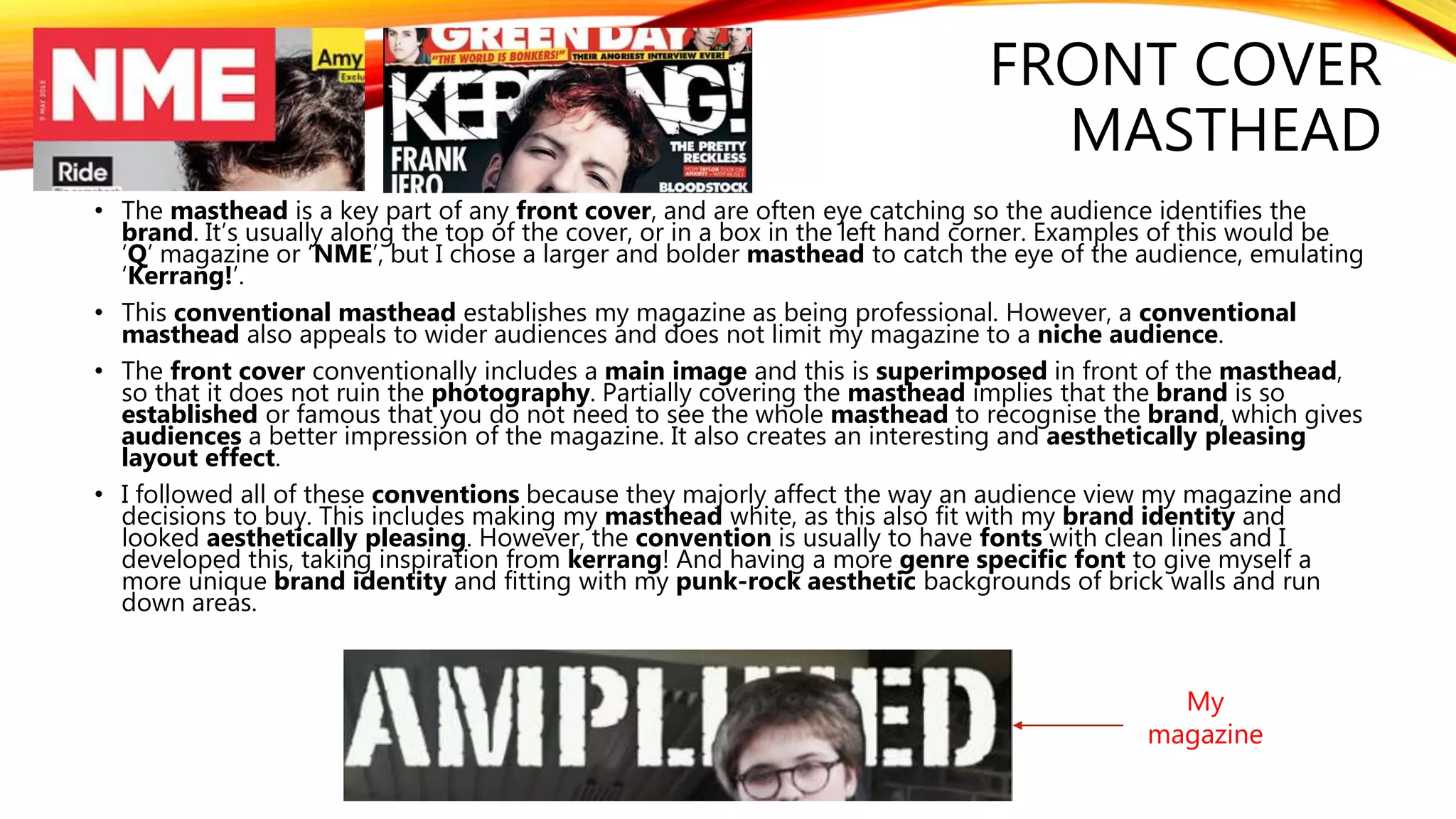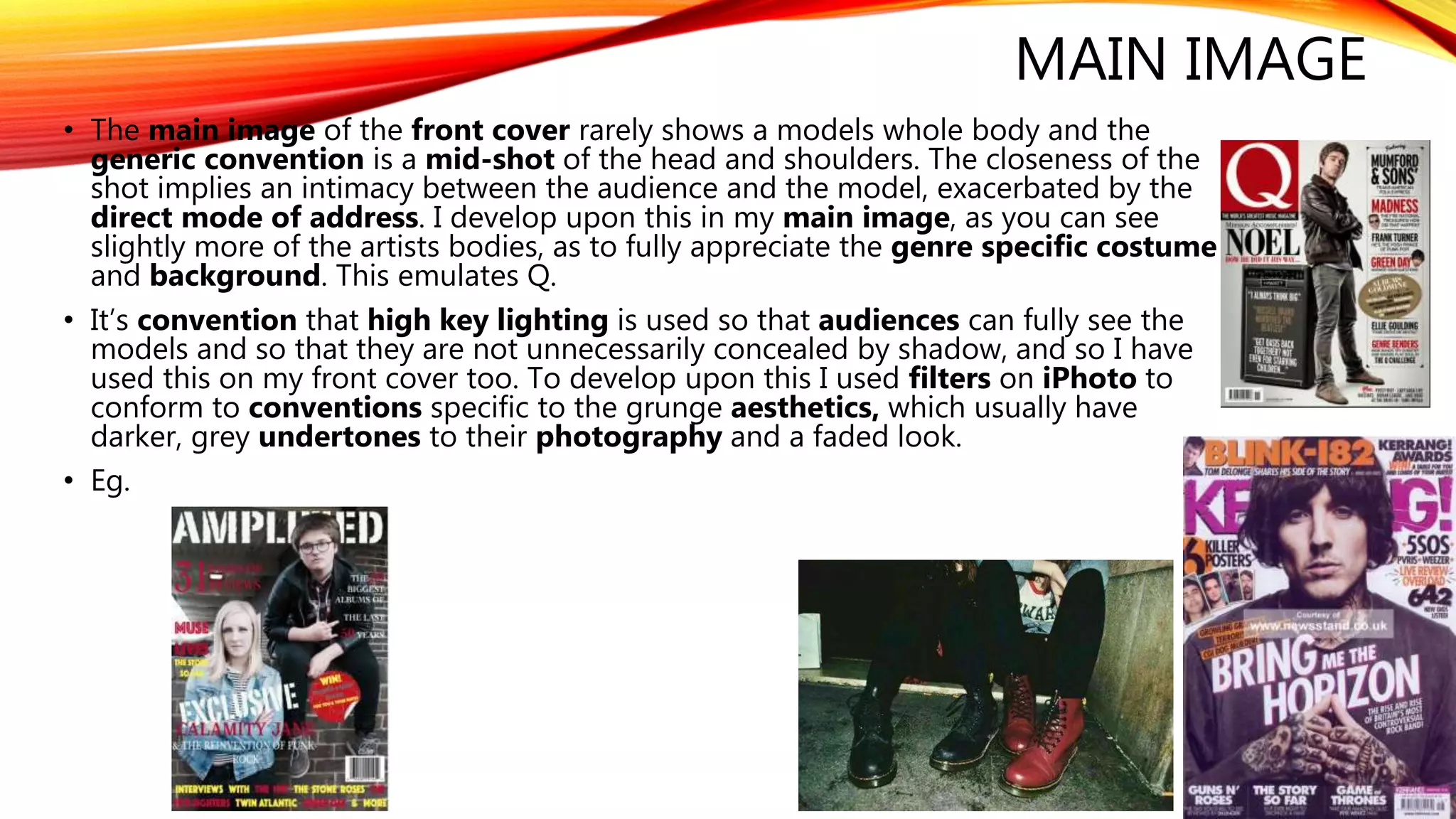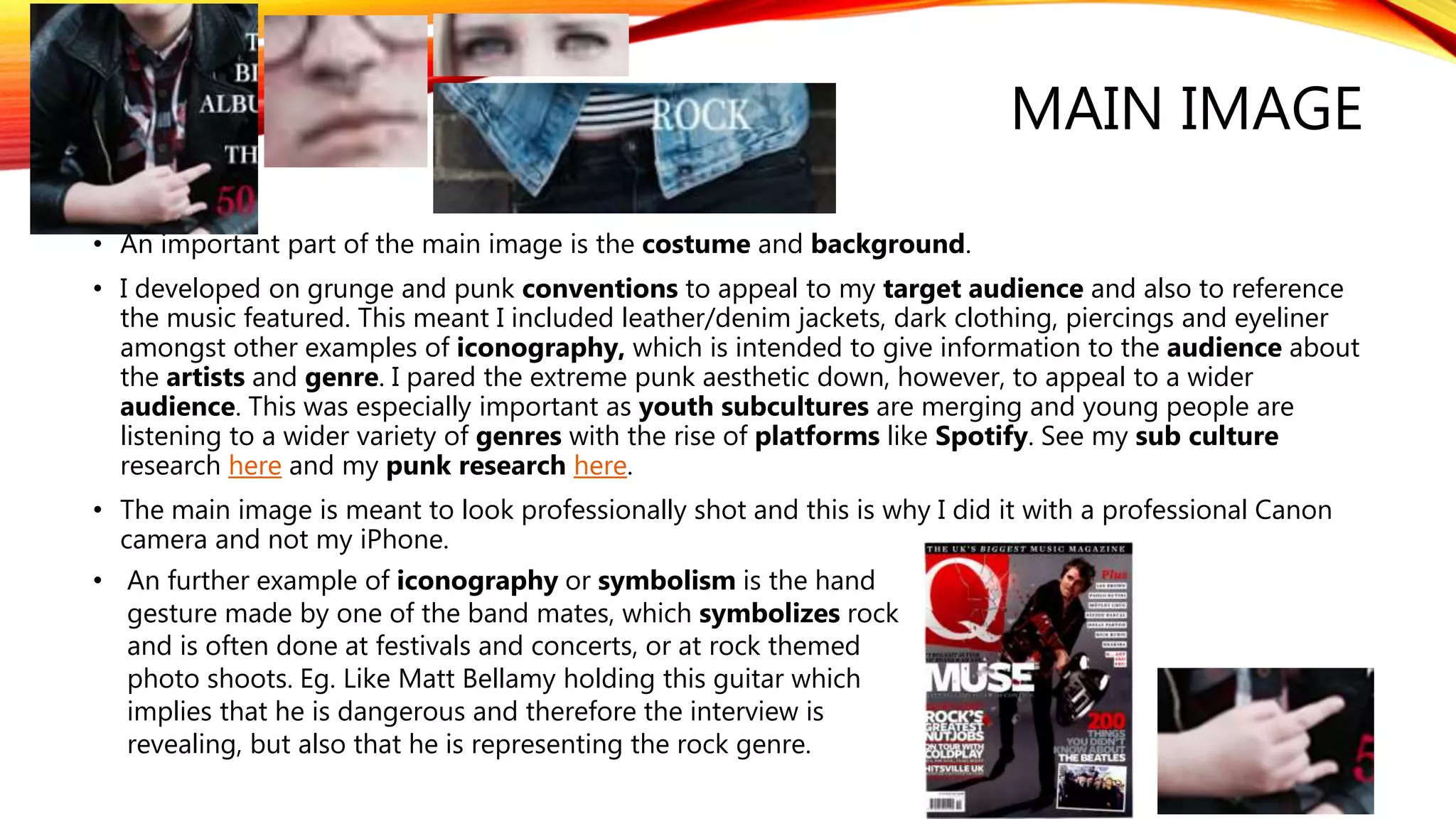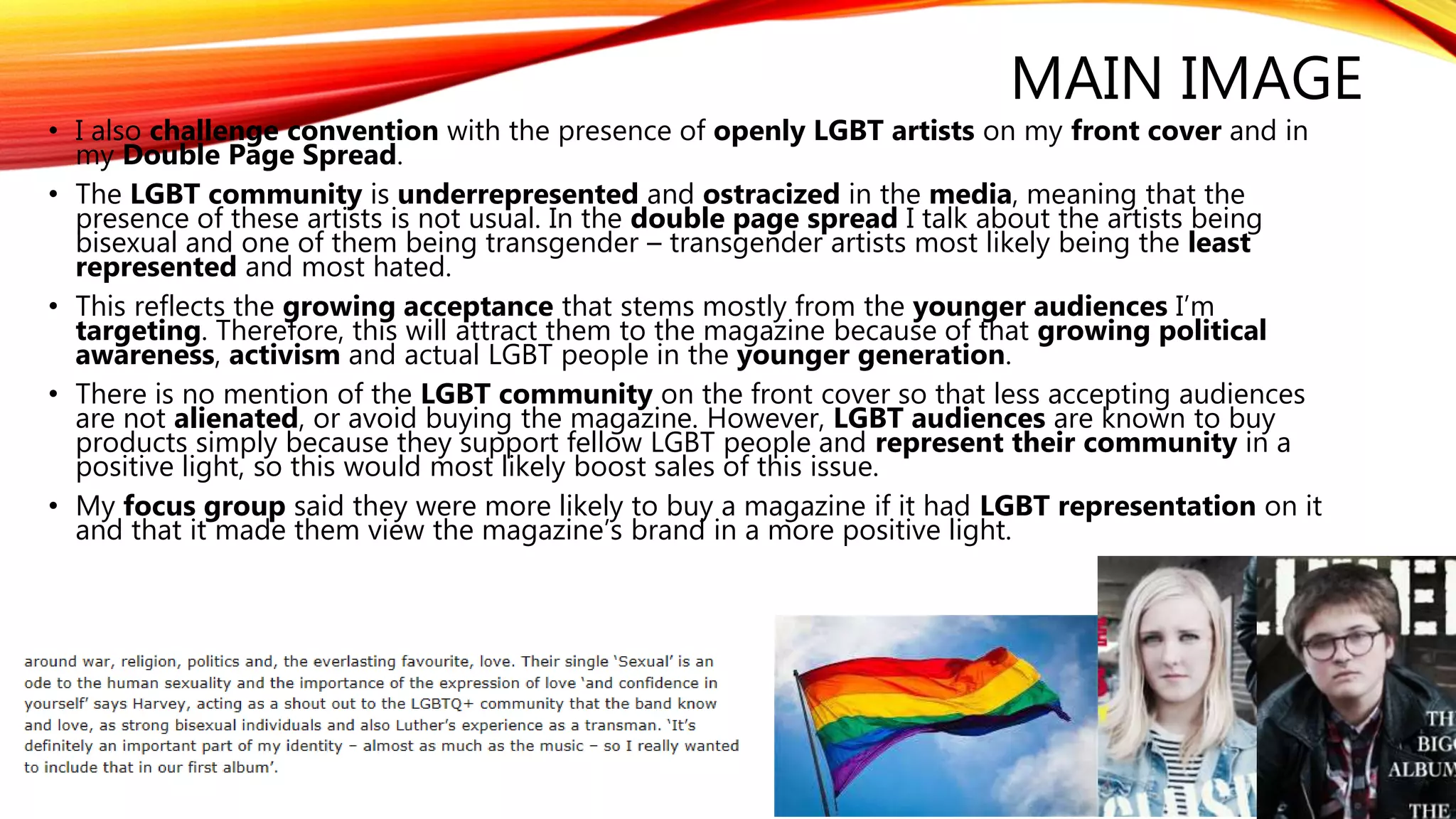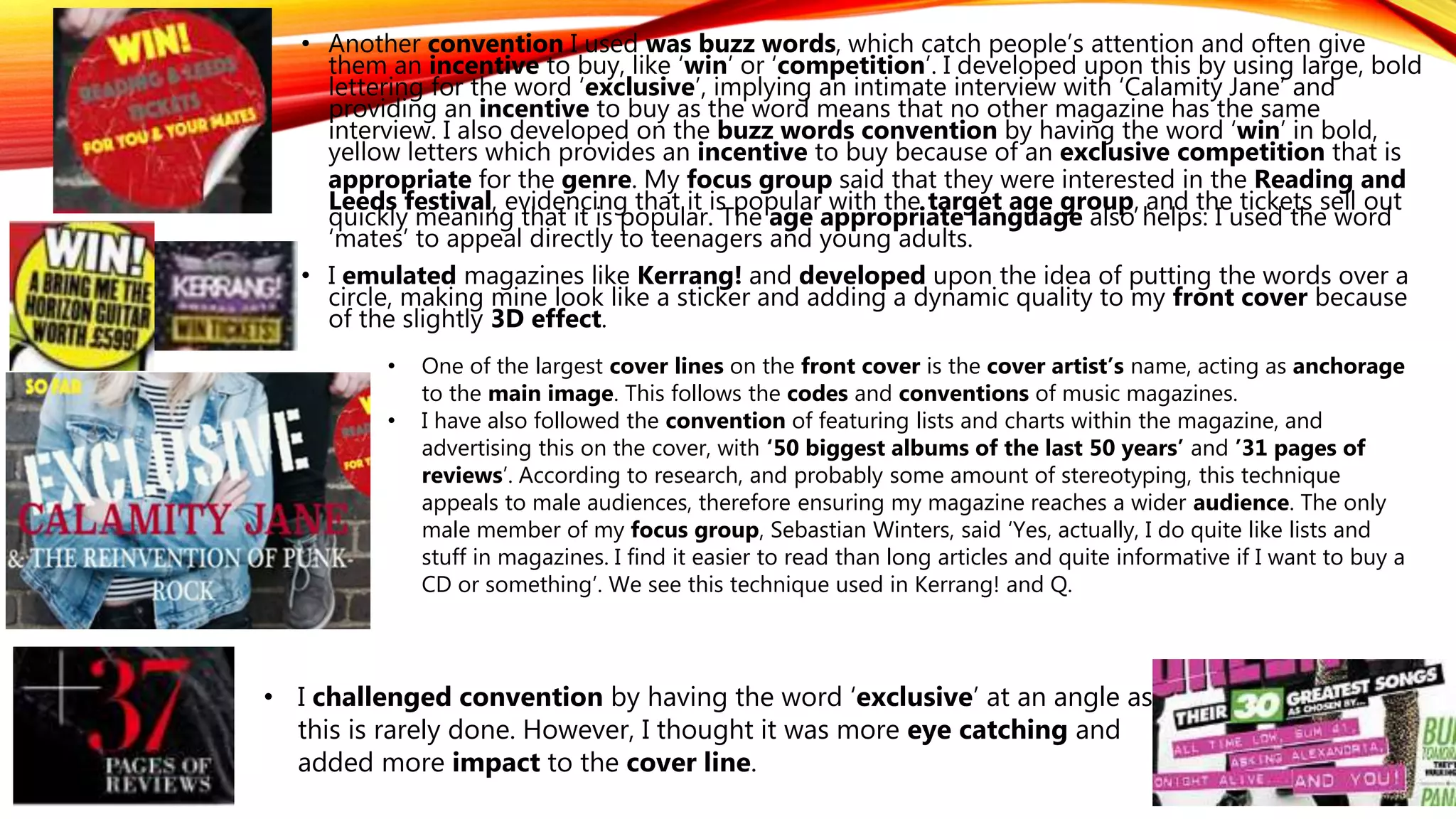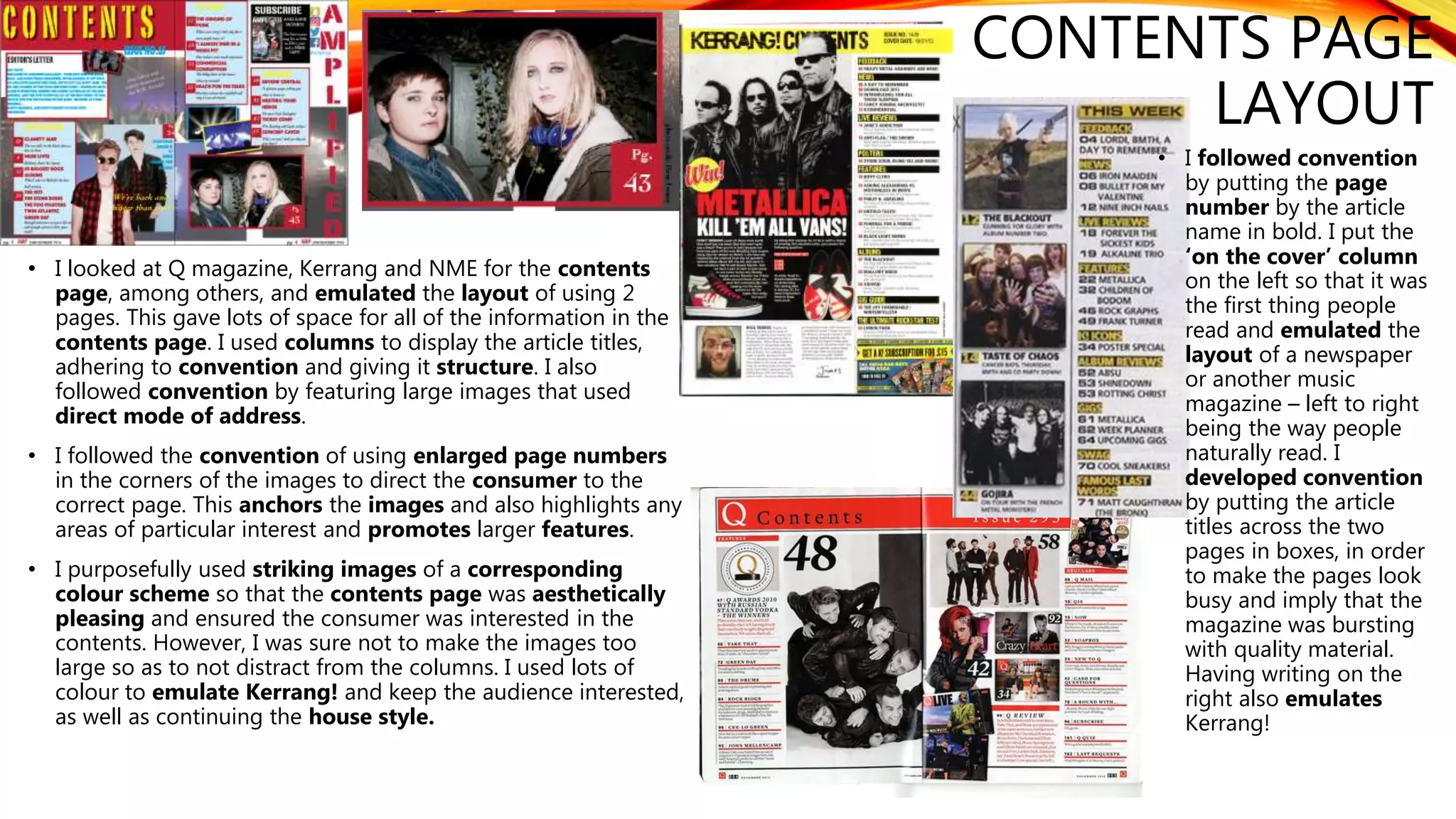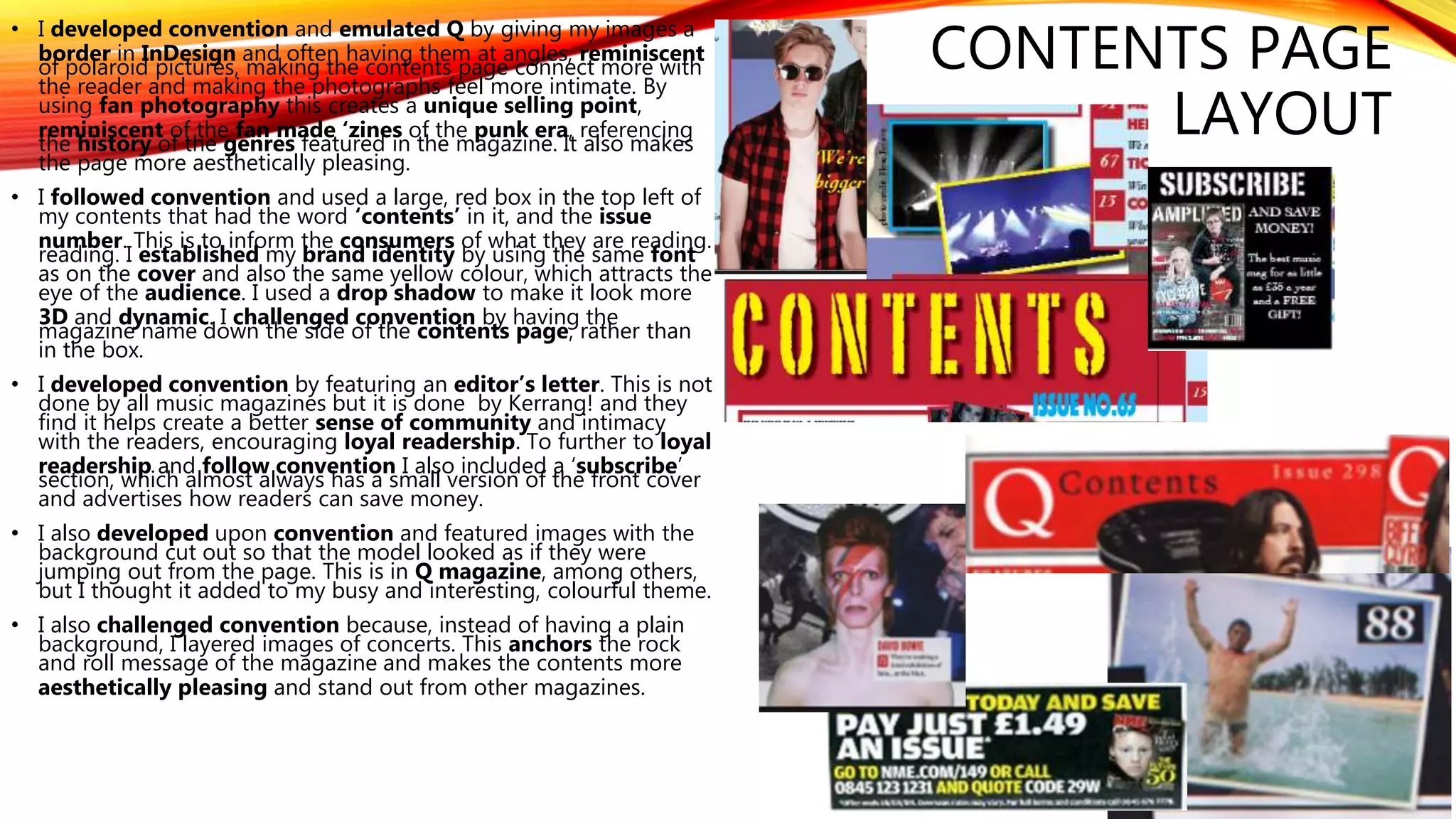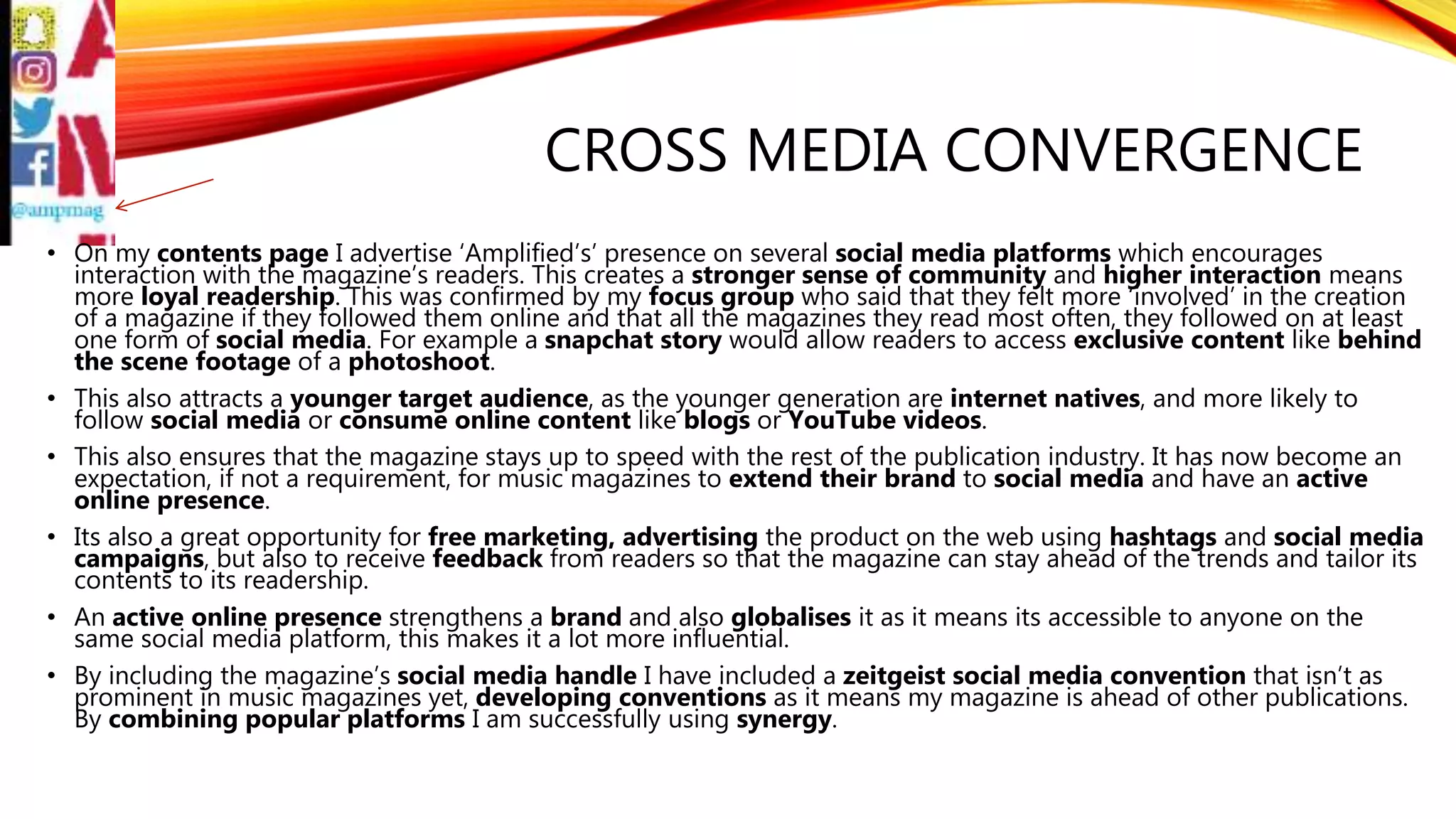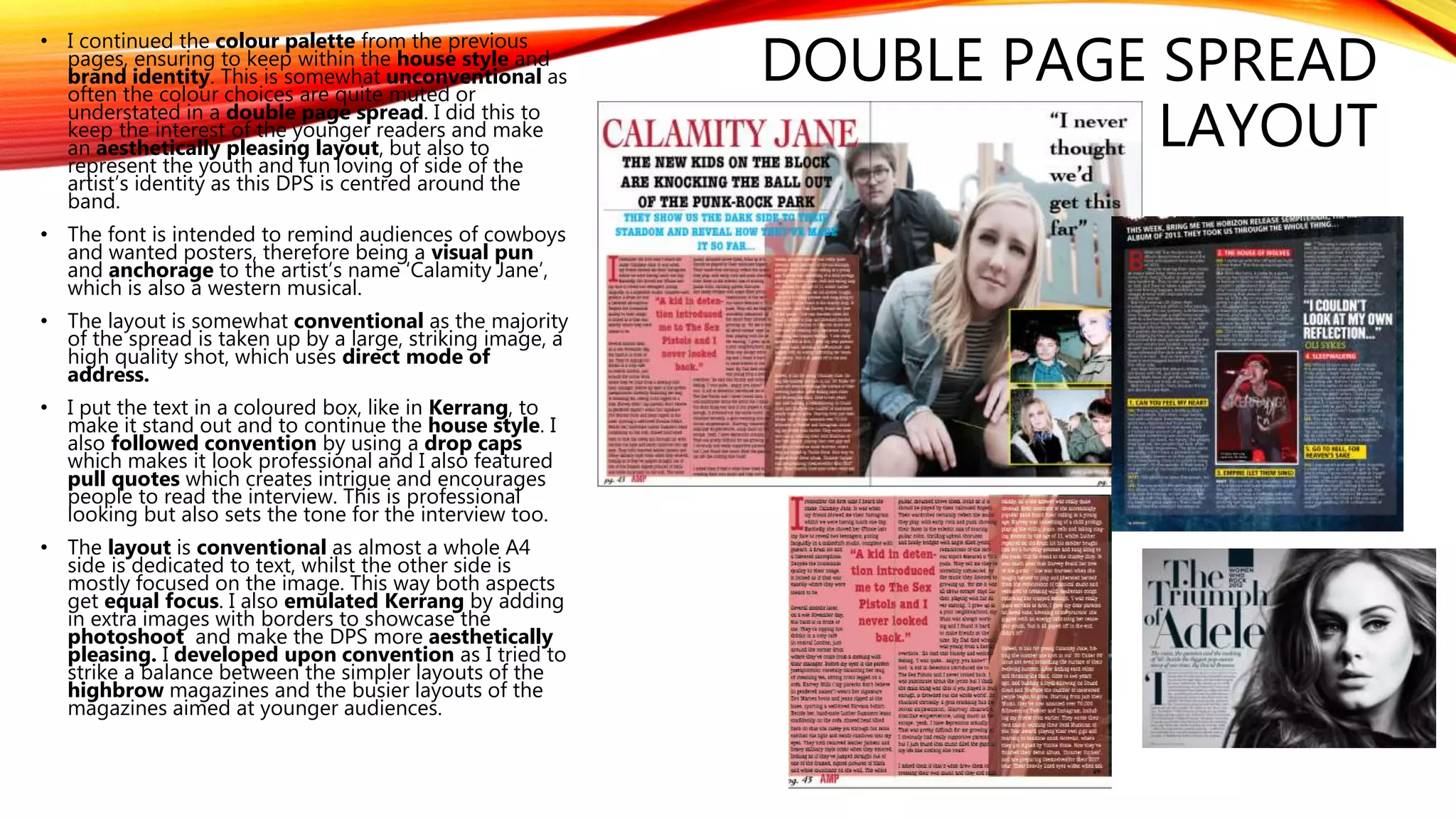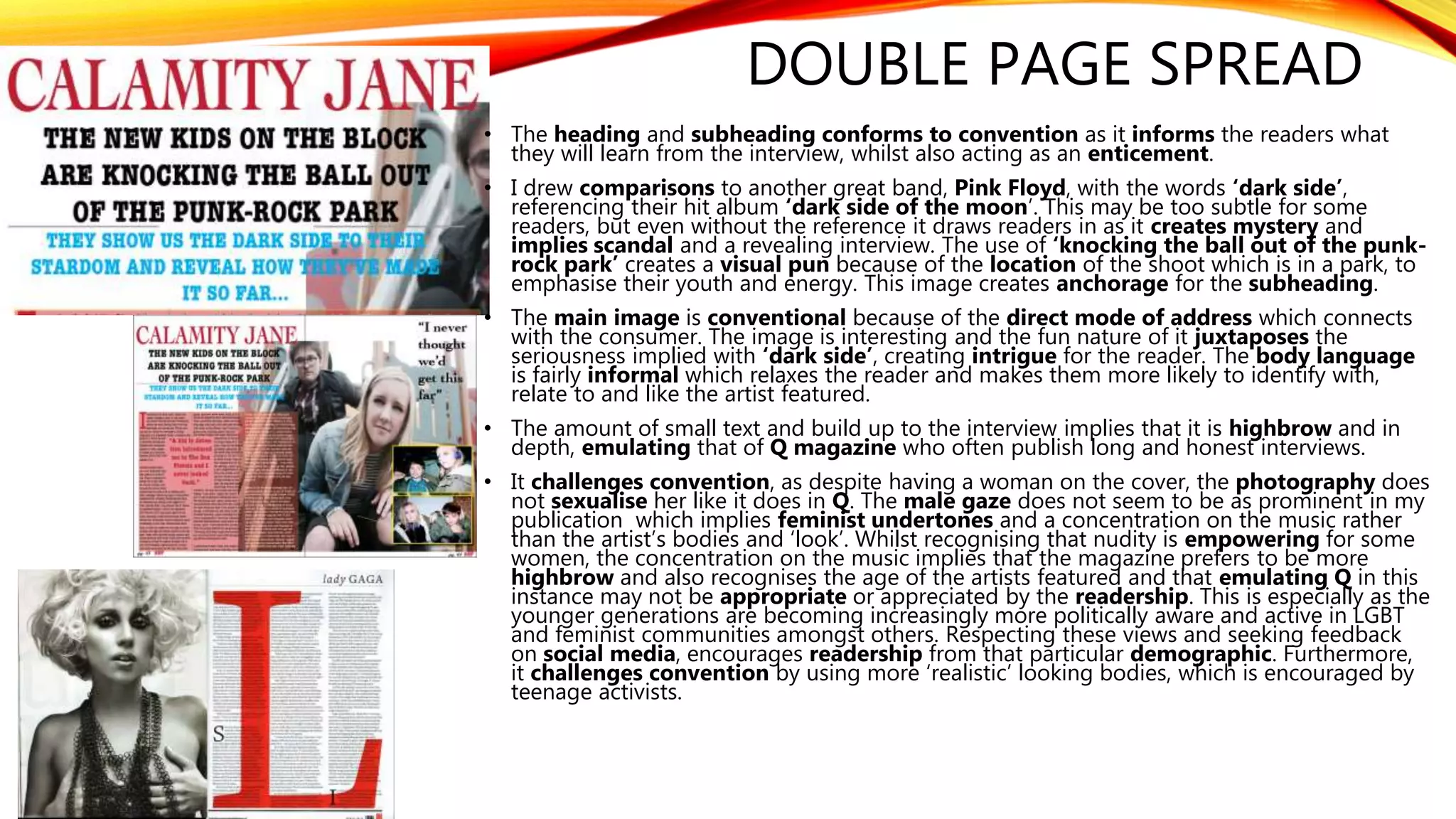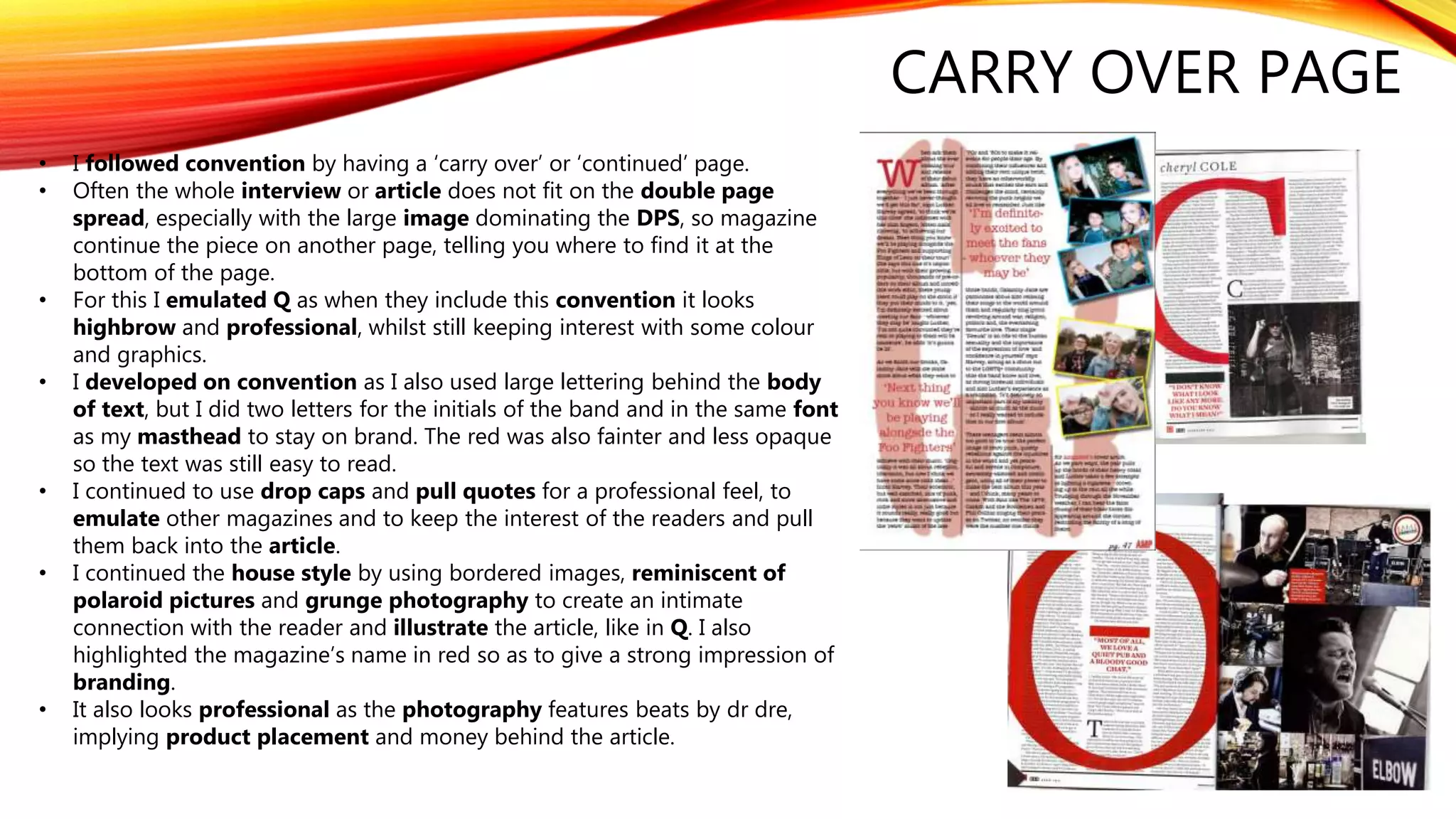The document outlines the ways in which a media product, specifically a magazine, adheres to and develops various forms and conventions typical of real media products, particularly in its front cover, main image, and content layout. It discusses the importance of masthead design, the representation of LGBTQ+ artists, and the strategic use of cover lines to appeal to diverse audiences, while also integrating social media presence for greater engagement. The analysis details how visual aesthetics, iconography, and textual conventions are employed to create a professional and appealing product that addresses both traditional media standards and contemporary audience expectations.

